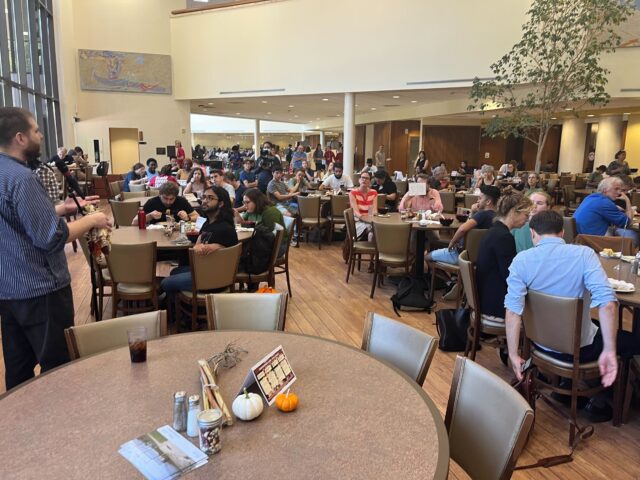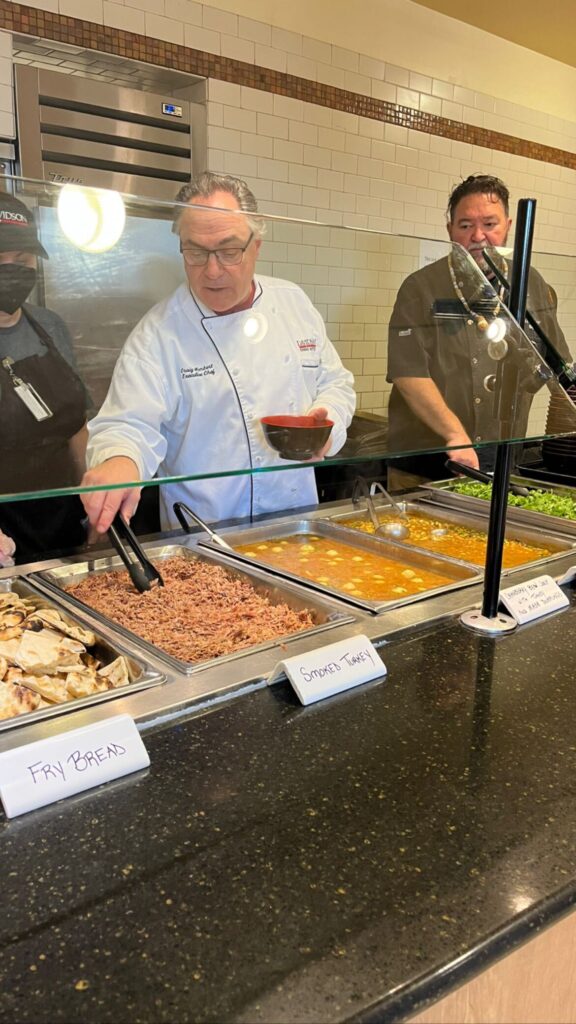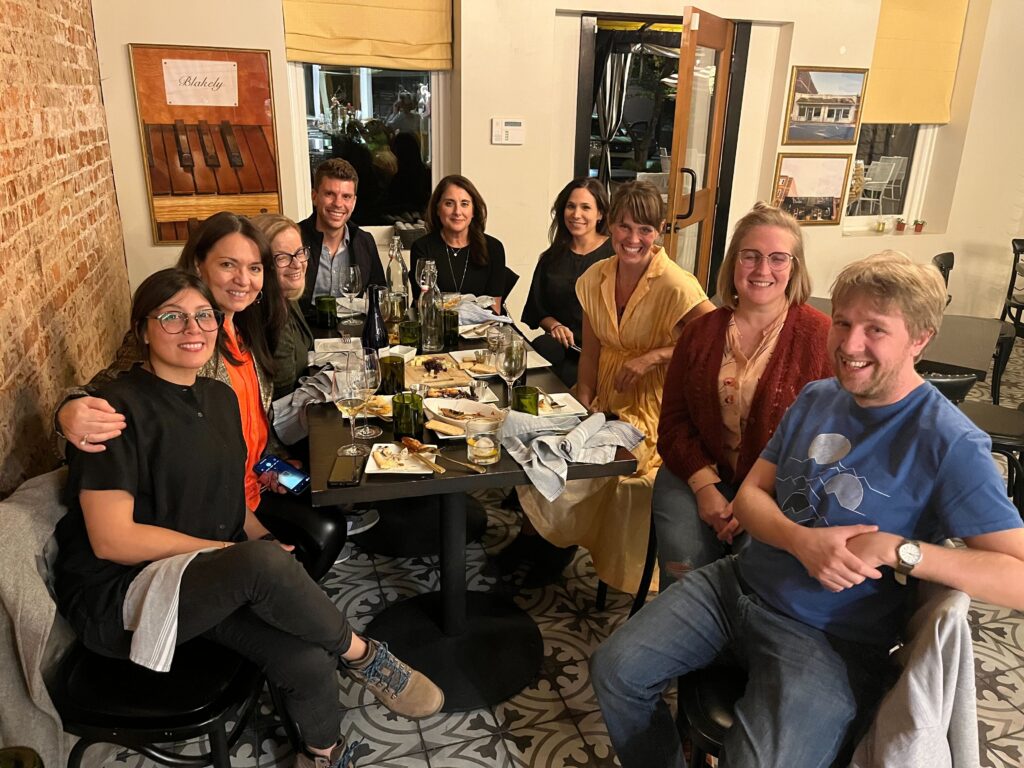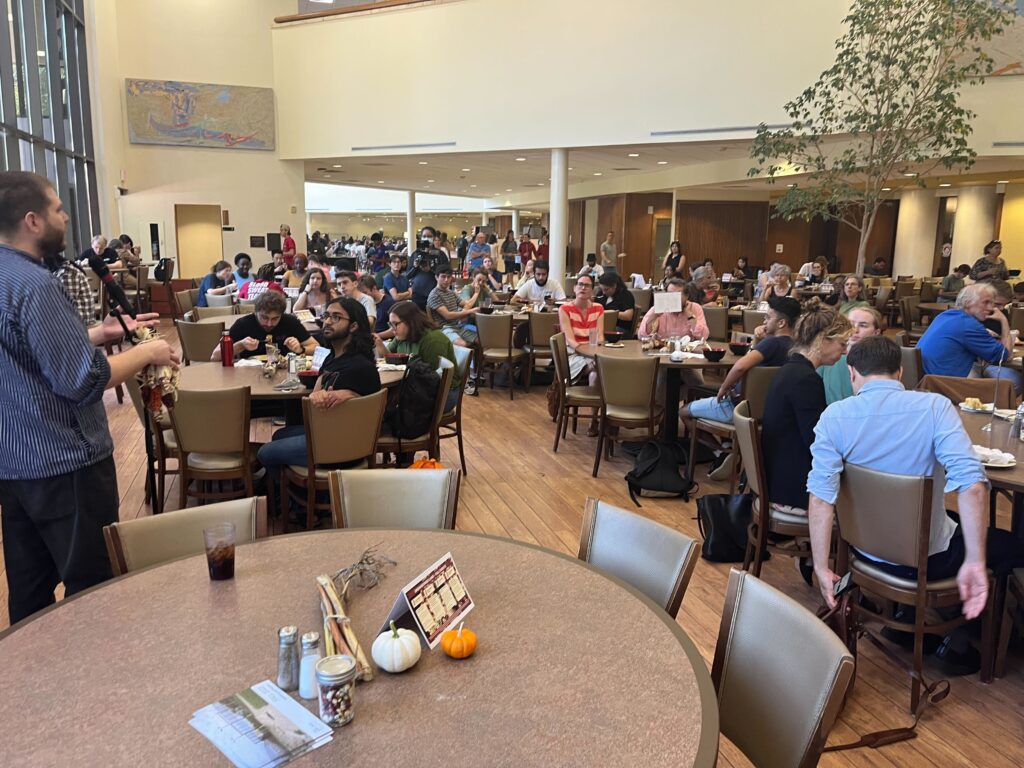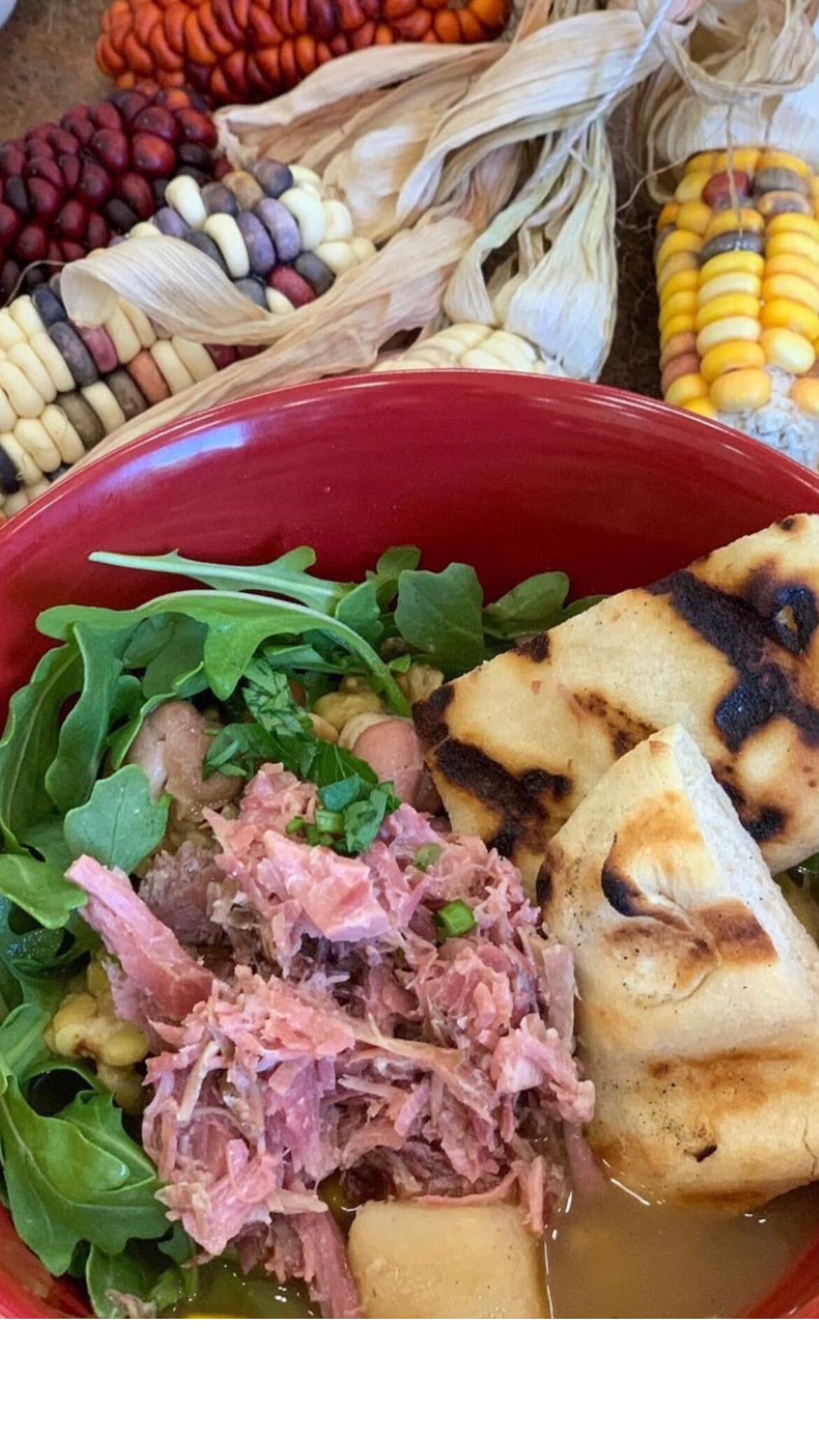Living in the present age of capitalist and industrial markets, we seem to be drifting away from the land. It is so easy now to just swipe a card at the grocery and receive processed food. So we often take for granted how food is grown and instead think of it as merely products for our consumption. We forget that each food item on the shelf has its own story, whether it be its adventure through the capitalist market or its relationship with the land and those who cultivated it.
For the past half year, I have witnessed the growth of catawba corn planted outside the Visual Art Center. Many of my friends have asked me what the plants were for. I would answer that they are part of the Unshadowed Land project with artist Nicholas Galanin; that as part of this sculptural project, we are planting catawba corn, native to the indigenous Catawba people in this area, in the shape of the shadow of an Andrew Jackson monument. They would reply that it sounds interesting. And the conversation would typically come to a halt there. Even after attending the artist’s talk and seeing the seeds growing into corn, the project still felt a little distant from me, a foreigner in an unfamiliar land, and I guess that would probably also be the case for many students who are not from the region.
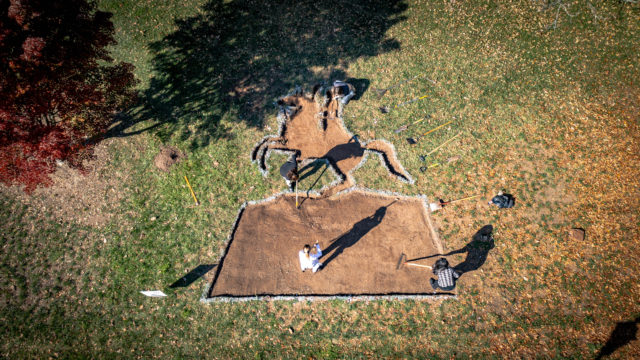
Unshadowed Land
But eating the catawba corn was such an inspiring experience that I now understand why it was so crucial for the corn to be planted on campus and to eventually arrive at Commons. Unlike any other meal on a regular day, I was aware of what I was eating, aware where it may come from, and aware of who planted it. I paid attention to my experience of eating, something that I never bothered to do, feeling myself chewing on the odd texture of the catawba corn kernels and swallowing them. At that moment, the kernels were no longer mere objects existing outside of my body, irrelevant to my experience, and I was surprised at how magical that moment was. They became an anchoring point that really pulled me onto the land and into a knot of all its histories and discourses.
More recently, there has been a lot of discussion about the history of Davidson College and goals to commemorate the people who contributed to its establishment. But we often easily overlook the plants that existed on this land long before our arrival and the cultures of which these plants were crucial. Variations of corn were grown here for thousands of years. The indigenous people would watch which seeds grew the hardiest corn or what techniques worked best and adapted their farming for the next season. Corn “helped build [their] societies” so there was a “near-religious thought process towards it,” according to Chef Dave Smoke McCluskey in the panel discussion “The Growth of ‘Unshadowed Land’: Welcoming Kus Back to Campus“. Corn was not just a source of nutrition, but a cultural product. In Cultural Psychology, we term the relationship between humans and our culture a “mutual constitution,” meaning one depends on the other and simultaneously shapes the other. Corn plays a role in this process of the mutual constitution as well. The corn fields are the venues through which indigenous people communicate with their land and connect with it. And with their hands touching the land they also left marks of their experience. Such a gesture connects the past to the present and plants a seed for the future. But colonialism and relocation forced the indigenous people to abandon the land, leaving behind a land without its memory.
Nicholas Galanin, the artist of the ephemeral sculptural project Unshadowed Land will have his artist talk this spring. Please visit Van Every/Smith Gallery’s website for more information on the Unshadowed Land project.

